Payment Center
Welcome to the Acosixsigma Payment Center. This payment method facilitates payment to Certification Programs for participants. All transactions are guaranteed by PayPal with the highest level of security. The costs appear in dollars, and these include the VAT of Colombia.
[captainform id=»756588″]
Leave us your data to advise you!
FAQ
According to the Body of Knowledge (BOK) of the American Society for Quality (ASQ) and the international certification programs recognized by Motorola University and the International Society for Six Sigma Certifications, the minimum hour number of the Six Sigma program is: There are a number of Six Sigma programs that are widely marketed and apply only a fraction of the BOK for each level. Acosixsigma is recognized for the large amount of curricular content that applies to all types of industry. For example, the estimated time for a Black Belt certification course is 120 hours, not including additional time allocated to a Six Sigma project. Other providers offer Black Belt training courses totaling 90 hours and Green Belt courses advertised at 56 hours. Therefore the variability in class hours obviously serves as a warning for interested companies to carefully check the subjects when taking a particular course against the established criteria for certification.
A Lean/Kaizen/Blitz Event is an intense effort where the team applies specific Lean approaches to reduce waste, defects, and cycle time and to implement improvements in a particular process or department.
Lean Six Sigma is an integrated set of methodologies that encompasses both Lean and Six Sigma concepts. It combines two powerful toolsets to address all aspects of quality, cost, and delivery. Both sets of methodologies have a customer and quality focus and are based on continuous improvement, which allows them to be very complementary.
Lean focuses on offering competitively priced products and services by eliminating waste and its drivers, while Six Sigma focuses on minimizing and reducing process variation that causes nonconformities.
Lean Six Sigma combines the strength and rigor of Six Sigma and data-driven analysis with the simple tools of Lean to eliminate waste and its drivers. The combination of the two methods provides a more robust set of tools for organizations to apply to solve problems, using the tools and techniques that best suit the specific problem at hand. Rather than the traditional independent use of tools, Lean Six Sigma combines Lean approaches into Six Sigma through the DMAIC (Define, Measure, Analyze, Improve and Control) method, as well as allowing Lean approaches to be used on their own. in the DMAIC model.
Process improvement is necessary for the performance of an organization that does not meet customer requirements. Lean Six Sigma offers a comprehensive set of tools, techniques, and approaches to enable an organization to gather customer requirements, analyze existing performance against those requirements, implement solutions to address performance gaps, and maintain best-in-class status. The tools and techniques used are the most appropriate for the specific problem at hand.

